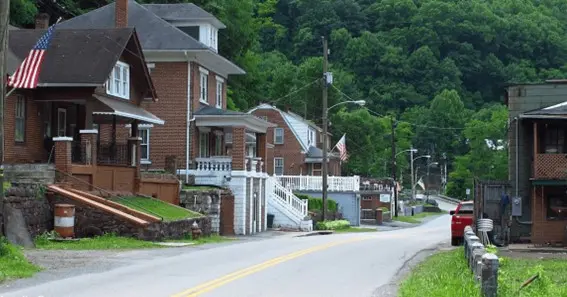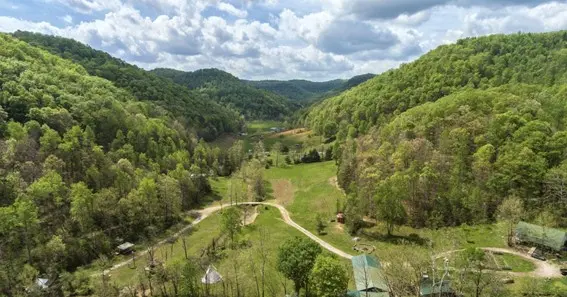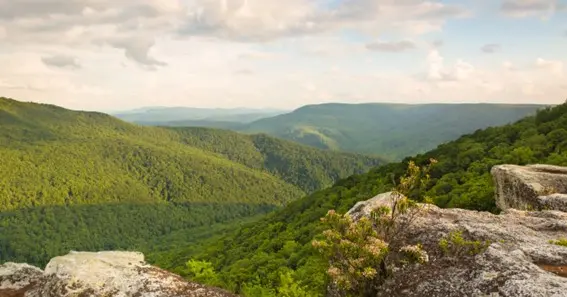What is a holler? A holler, or hollow, is a small, sheltered valley in the Appalachian Mountains of the United States. When they hear the phrase, they imagine difficult terrain, deep woods, and maybe a modest lifestyle. A scream is more than a spot. The Appalachian culture and history inform this term. This is just one element of a larger culture, community, and human interaction narrative. Thus, let us discover what is a holler and why those who understand it value it, in this article.
What Is A Holler?
A holler, or hollow, is a tiny, flat valley in the US Appalachians. Most valleys are narrow and hidden between hills or mountains, and creeks pass through them. The Appalachian language and culture heavily influenced the word holler. It’s a lifestyle passed down from generation to generation. Holler dwellers rely on one another and the land to survive. Due to their isolation, these places have maintained a culture of independence, strength, and community. This was a briefing on what is a holler.
Also Read N: What Is Brake Checking? Psychology Behind Brake Checking
Geography Of A Holler

After learning about what is a holler, next you learn about its geography. Steep slopes and dense woodlands are typical of hollers. Geography distinguishes holler temperatures and ecosystems. The colder, wetter, narrow valleys are generally between higher mountains. This microclimate supports many flora and animals. Wildlife is more diversified in regions with creeks and streams. Geographical issues make items difficult to reach and raise the danger of natural disasters like floods and earthquakes. Despite these issues, hollers’ natural beauty and solitude make them valuable to residents.
Also Read P: Matt Mccusker Age: Everything You Need To Know
Cultural Significance Of Hollers
Appalachian folklore and society revolve around hollers. They frequently follow a natural and cultural lifestyle. Holler solitude has preserved much of Appalachian culture: stories, crafts, music, and more. Families and groups played and sang in Appalachian hollers. This is where bluegrass and country began. These sites are also known for raucous storytelling. Generations pass along family myths, ghost stories, and local folklore. Holler residents’ thoughts and perspectives are culturally significant. These people are independent, self-reliant, and group-oriented.
Life In A Holler
Living in a holler requires self-sufficiency. Residents farm, hunt, and harvest plants to satisfy their needs. Modern services and amenities take much work to get in isolated hollers. Because of this, the residents have developed a resilient lifestyle, using their abilities and inventiveness to survive. The community is tight because neighbors support each other and share resources. This tight-knit community lets individuals feel like they belong and assists one other, which is crucial in a scream. Living in a holler is distinct and pleasant because of its calm and quiet compared to city life.
Evolution Of Hollers Over Time
Hollers have altered for economic, social, and ecological causes. Many holler residents struggle to earn a livelihood after losing coal mining and timber employment. The social structure of these communities has altered due to population loss and migration. The holler residents have found new ways to survive despite these changes. Through tourism, environmental protection, and long-term growth, Hollers’ cultural legacy and natural beauty are safeguarded. The evolution of hollers reveals how rural communities have faced larger issues. This emphasizes the need to balance custom with technology.
Hollers In Popular Culture

Pop culture features hollers in novels, music, and movies. Much literature and non-fiction has been written on these strange and gorgeous mountains. Beautifully written about life in the Hollers by James Still and Harriette Arnow, it captures Appalachia’s people and surroundings. Many holler songs deal with loneliness, pain, and strength. Showing the hardships and accomplishments of the inhabitants in these locations, films have also examined their distinctive lifestyles.
Challenges Faced By Holler Communities
Despite its beauty and cultural significance, hollers have several issues that impact their residents. Economic issues, healthcare and education access, and environmental harm are major issues. Since conventional companies are closing, many municipalities need help. Health inequality and a lack of healthcare services plague the elderly and other disadvantaged. Many young people leave the screams to get higher schooling since there are few opportunities. Environmental issues threaten Hollers’ natural beauty and resources, including pollution, tree cutting, and climate change.
Future Of Hollers
How custom and change interact will form hollers. More individuals are restoring these communities and preserving their heritage. Hollers are being revived via sustainable tourism, preservation, and community development. Modern equipment and methods combined with old life values and practices can lead to a healthy and successful future. Toughness and adaptability help holler residents navigate challenging times and assure a bright future for these distinct communities with outside aid and investment.
Conclusion
Finally, knowing what is a holler? provides a distinct perspective on a particular environment and lifestyle. More than merely little hills, the screams have a rich cultural heritage, strong community, and proximity to nature. Despite their issues, hollers continue to captivate and inspire cultural preservation. Understanding how important hollers are and supporting attempts to revive them may preserve their traditions, values, and natural beauty for future generations. This was a brief article on what is a holler.
FAQ
What Is A Holler Means?
Hollers, often called hollows, are tiny, sheltered Appalachian valleys. They are narrow and out of the way, with a brook or creek running through them.
Why Do The Appalachians Holler?
Hollers preserves Appalachian music, tales, and crafts. They value community and nature.
What Issues Do Holler Groups Face?
Holler communities have poor economies, insufficient education and health care, and environmental harm. The loss of established enterprises has made it tougher for people to work, and health and education varied greatly.
How Do Films And TV Depict Hollers?
Literature, music, and movies about hollers generally explore themes of isolation, strength, and the peculiar way of living in these distant locations. Fiction and non-fiction writings about them capture Appalachian society.
What About Hollers?
Hollers will prosper if they can blend custom and technology, foster green growth, and preserve their natural and cultural legacy. To ensure their future, we must revive hollers through tourism, conservation, and community development.
Sources:










